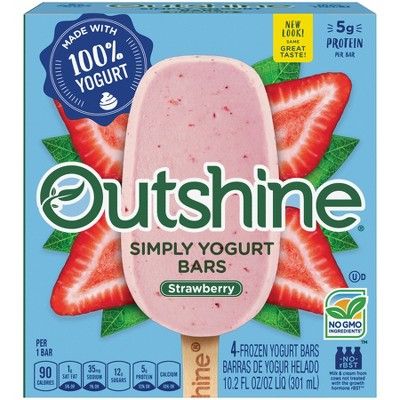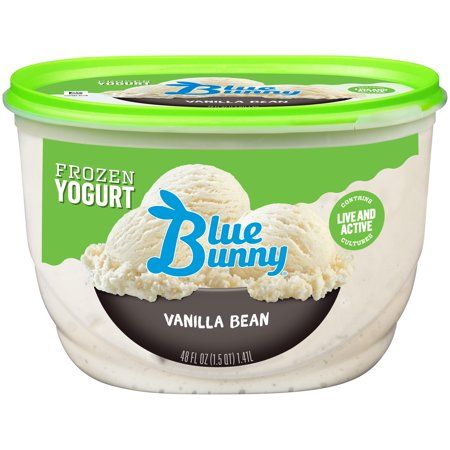Home » Diet & Food »
If You Like Ice Cream Way Better Than Froyo, Nutritionists Say You Should Just Have Ice Cream
Raise your hand if going out for frozen yogurt was your favorite gal pal outing a few years back. Cheaper than drinks and healthier than ice cream (right?). What more could a girl want?
Considering the number of froyo joints has risen by 18 percent over the last five years, the obsession hasn’t exactly slowed down.
“Our society is always looking for a way to treat themselves without guilt,” says Gabby Geerts, RD, dietitian at Green Chef. “Ice cream is extremely popular, so froyo has a large market.”
Considering, though, that most people cover their giant cup of self-serve in an entire cake’s-worth of toppings, you’ve gotta wonder: Is frozen yogurt really all that healthy?
According to Geerts, a half-cup serving of frozen yogurt has about 110 calories, three grams of fat, and 17 grams of carbohydrates (depending on brand and flavor, of course).
“Ounce for ounce, frozen yogurt has about 25 fewer calories than ice cream—and only a third of the fat and saturated fat,” she says.
So while frozen yogurt can be healthy, it’s not always much better than a pint of Ben & Jerry’s in the end. It all depends on how much you down—and what you eat it with.
What’s the difference between frozen yogurt and ice cream, really?
Both frozen yogurt and ice cream are milk-based products, so they tend to contain about the same amount of protein and sugar (before you consider flavors and other add-ins), says Geerts.
However, ice cream is typically made with cream or milk fat, which contributes to its higher fat and saturated fat content. (The FDA actually requires the frozen treat to contain at least 10 percent milk fat to qualify as ice cream.)
Frozen yogurt, on the other hand, is made of milk fermented with yogurt cultures, so it has about as much fat as a standard glass of low-fat milk. The downside: As with many lower-fat products, brands often add extra sugar to froyo to compensate for its less-creamy taste.
Anywho, here’s what you’ll get in your average half-cup serving of vanilla frozen yogurt, according to the USDA Nutrient Database:
- Calories: 114
- Protein: 2.88 g
- Fat: 4.03 g
- Saturated fat: 2.46 g
- Carbs: 17.4 g
- Fiber: 0 g
- Sugar: 17.3 g
- Calcium: 103 mg
- Iron: 0.216 mg
- Sodium: 62.6 mg
And in your average half-cup of vanilla ice cream, per the USDA Nutrient Database:
- Calories: 137
- Protein: 2.31 g
- Fat: 7.26 g
- Saturated fat: 4.48 g
- Carbs: 15.6 g
- Fiber: 0.46 g
- Sugar: 14 g
- Calcium: 84.5 mg
- Iron: 0.059 mg
- Sodium: 52.8 mg
In addition to calories and fat, there’s another difference between frozen yogurt and ice cream you’re probably wondering about: probiotics.
But is heading to your nearest froyo joint as gut-healthy as eating a serving of actual yogurt? Yes and no.

“Frozen yogurt begins like refrigerated yogurt, by adding two essential live cultures (Lactobacillus bulgaricus and Streptococcus thermophilis) to milk,” says Geerts. “Most of the live bacterial cultures survive freezing, however, varying production methods and added ingredients mean all frozen yogurt products are not created equal.”
Dan Nguyen, RD, dietitian at HelloFresh, suggests reading a froyo’s label and ingredient list to confirm the presence of “live and active cultures.”
Still, if gut health is top priority, you’re probably better off opting for a regular, lower-sugar yogurt, he says. (It typically contains more probiotics and less added sugar.)
What factors can make frozen yogurt not-so-healthy?
Perhaps the biggest issue with froyo: that most people dump all sorts of nutrition-less toppings on it.
“Customers may add sugary toppings such as candy, fudge, and chocolate sauces to a healthy non-fat Greek frozen yogurt, tipping the scale into unhealthy territory,” says Nguyen. (According to Nguyen, many froyo joints actually make these toppings easier to grab than healthier options, like fruit or seeds.)

And, frankly, many frozen yogurt eaters aren’t opting for the plain Greek yogurt, anyways.
“People forget that different varieties have different nutrition profiles,” says Nguyen. Opt for red velvet or cookies and cream froyo, and you’re getting lots of added sugars and other ingredients that also affect your cup’s health factor.
You can make frozen yogurt relatively healthy—but it’s all in how you indulge.
Of course, you can totally still treat yourself to tangy froyo; just keep your wits about you when you do.
If you’re at a self-serve froyo joint, first, opt for the froyo variety with the least fat and sugar, recommends Nguyen. Typically, original, plain yogurt will be your best bet. (Luckily, even plain frozen yogurt has a semi-sweet vanilla flavor, so you won’t feel like you’re missing out.)
If they have plain, non-fat Greek froyo, though, go for that. “The nutrition profile is even better, with approximately 0 grams of fat, 14 grams of sugar, and six grams of protein, which helps slow our absorption of sugar,” Nguyen says.
https://www.instagram.com/p/B5GkzXuFeAS/
Once you’ve selected a solid yogurt base, “don’t let the size of the serving spoon or bowl deceive you into overfilling,” says Geerts. A proper portion size is half a cup, or four ounces.
From there, top your froyo with fresh fruits and plain (not candied) nuts to bump up the nutrients and protein. If you’re into PB, opt for natural peanut butter instead of peanut butter sauce, suggests Nguyen. Need more sweetness? Add a touch of honey.
You can look out for these better-for-you frozen yogurt options at the grocery store.
Want to get your froyo fix at the supermarket? Look out for these three dietitian-approved frozen yogurts in the freezer aisle.
 Yasso Mint Chocolate Chip Frozen Greek Yogurt target.comSHOP NOW
Yasso Mint Chocolate Chip Frozen Greek Yogurt target.comSHOP NOW
Yogurt bars are a great way to practice portion control. “Made with Greek yogurt, these bars are creamy and higher in protein,” says Geert.
Plus, since they look like a true dessert (complete with chocolate chunks), they’ll satisfy your sweet tooth without digging you into the sugar hole, adds Nguyen.
Per serving: 100 calories, 2 g fat (1.5 g sat), 16 g carbs, 13 g sugar, 40 mg sodium, 0 g fiber, 5 g protein
 Outshine Strawberry Simply Yogurt Barstarget.comSHOP NOW
Outshine Strawberry Simply Yogurt Barstarget.comSHOP NOW
“With five grams of protein and only 12 grams of carbohydrates, these bars won’t drastically spike your blood sugar and leave you hungry soon after,” says Geerts.
Nguyen loves that they contain live, active probiotics and use actual strawberry and banana puree to deliver flavor.
Per serving: 90 calories, 2 g fat (1 g sat), 12 g carbs, 12 g sugar, 35 mg sodium, 0 g fiber, 5 g protein
 Blue Bunny Vanilla Bean Frozen YogurtBlue Bunnywalmart.comSHOP NOW
Blue Bunny Vanilla Bean Frozen YogurtBlue Bunnywalmart.comSHOP NOW
Prefer to eat your froyo with a spoon instead of on a stick? This tub is dietitian-approved. “Blue Bunny is honestly one of my favorite frozen treats brands,” says Nguyen, who likes this froyo’s short, nine-ingredient list.
This pick also contains probiotics and satisfies for little fat.
Per serving: 110 calories, 2.5 g fat (1.5 g sat), 19 g carbs, 16 g sugar, 55 mg sodium, 2 g fiber, 3 g protein
Still really craving ice cream?
Ultimately, if you genuinely like ice cream better than froyo, don’t force yourself to eat frozen yogurt for the sake of your health. Treat yourself to a serving of your favorite ice cream instead of pretending that even two servings of froyo will do it for ya.
Source: Read Full Article



